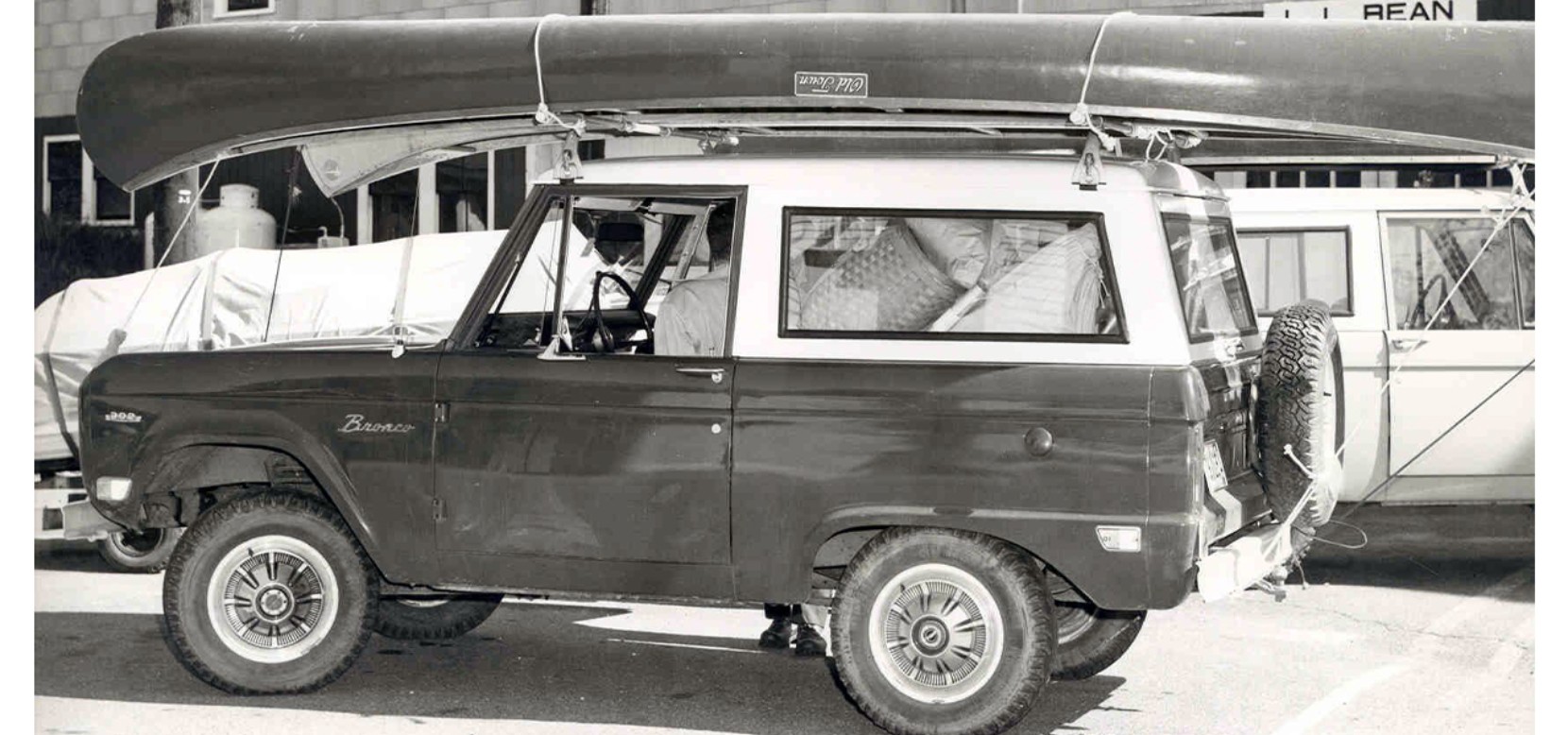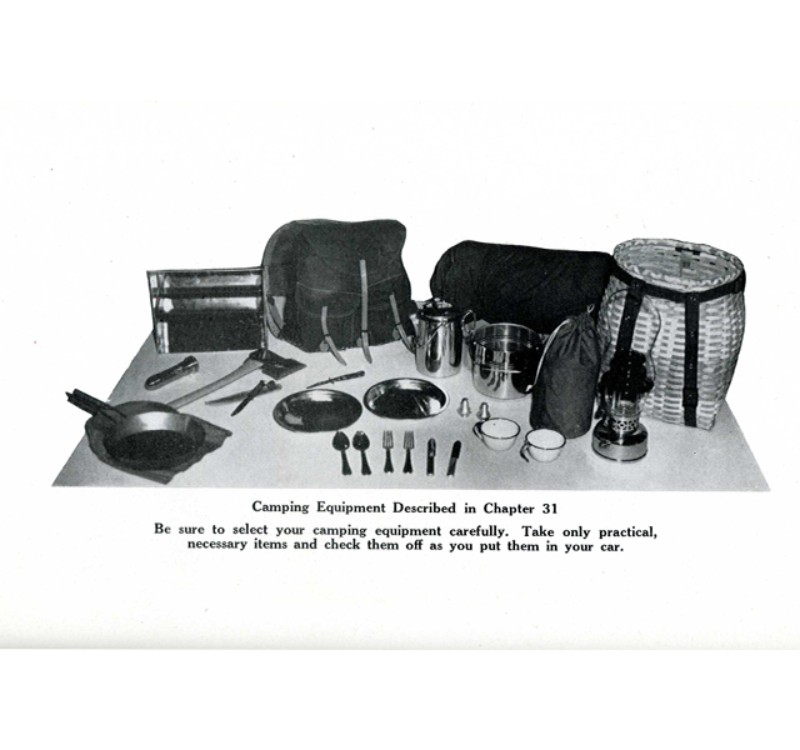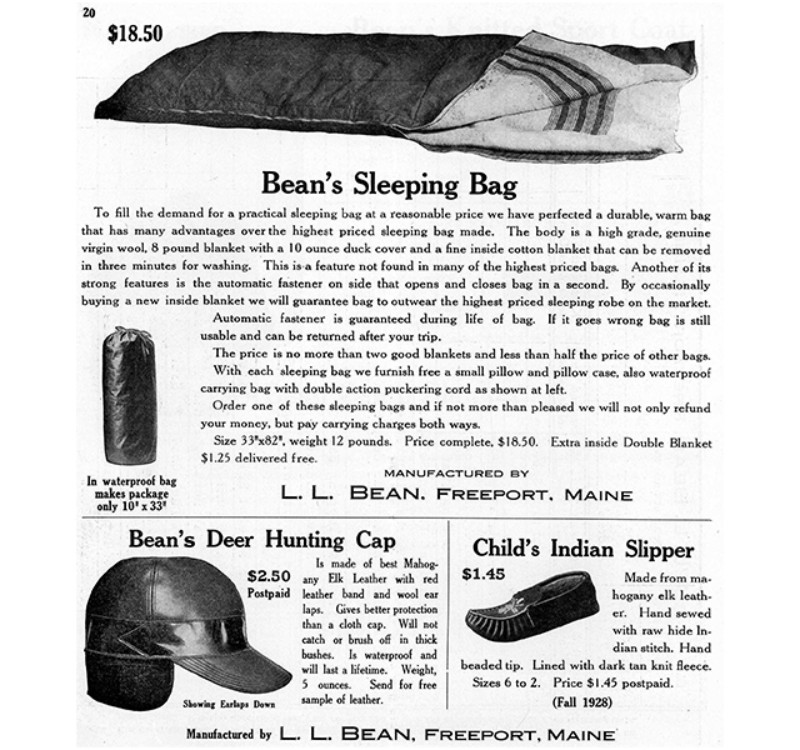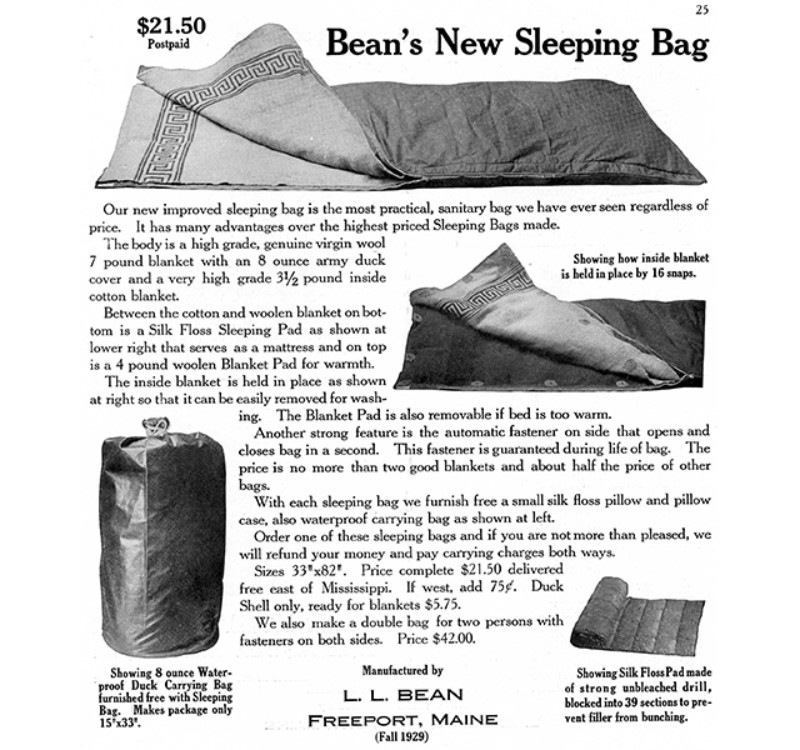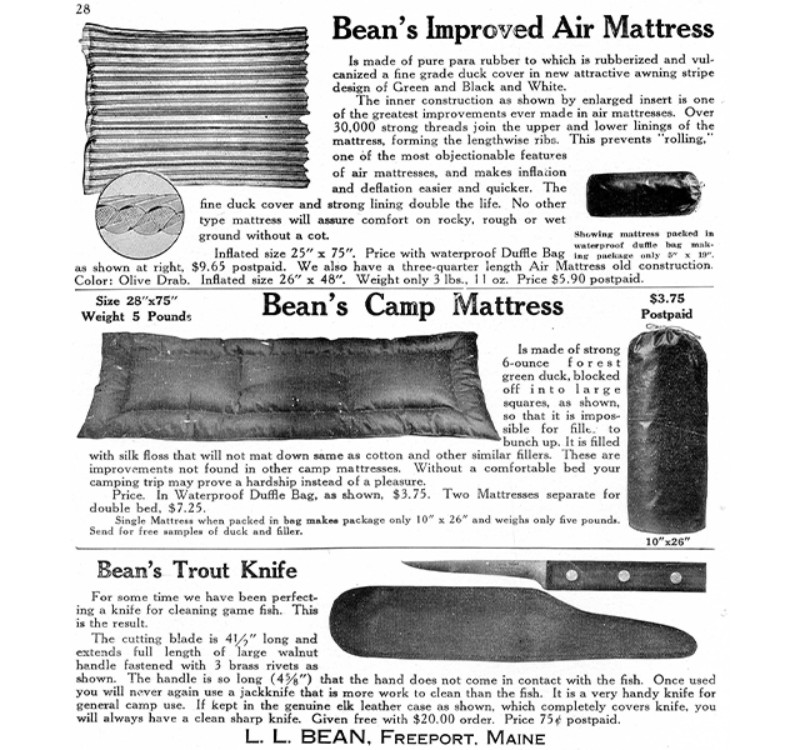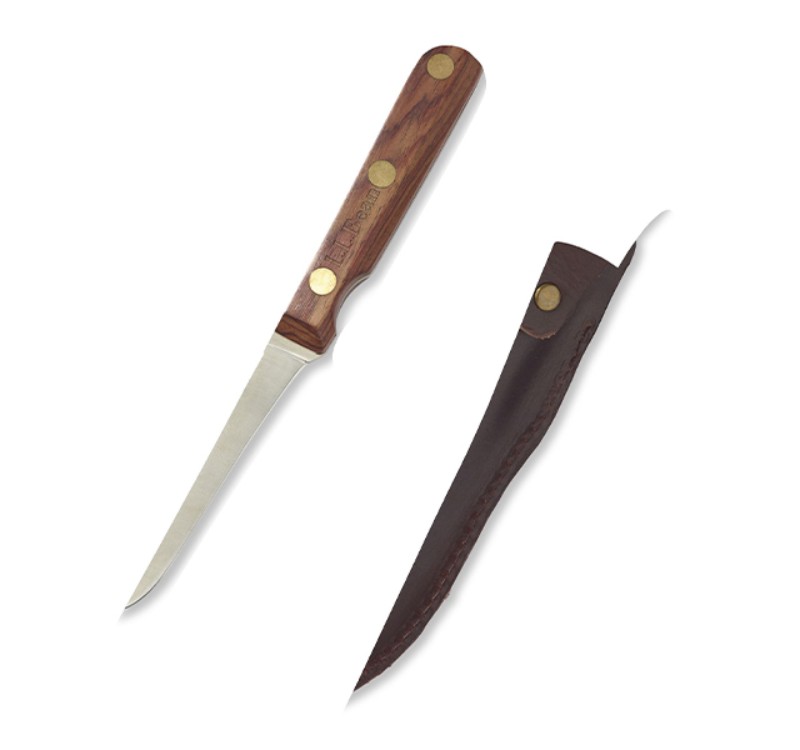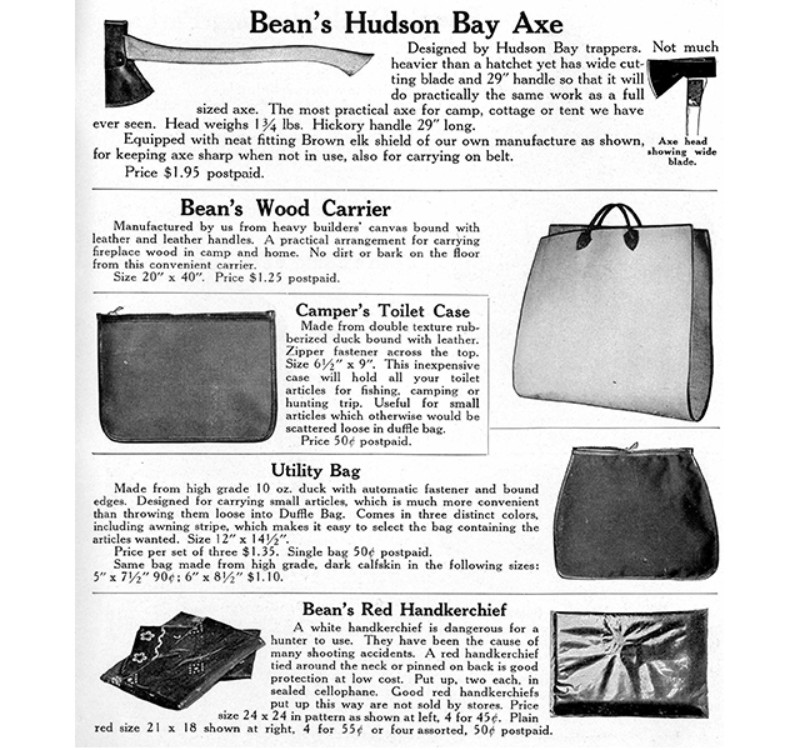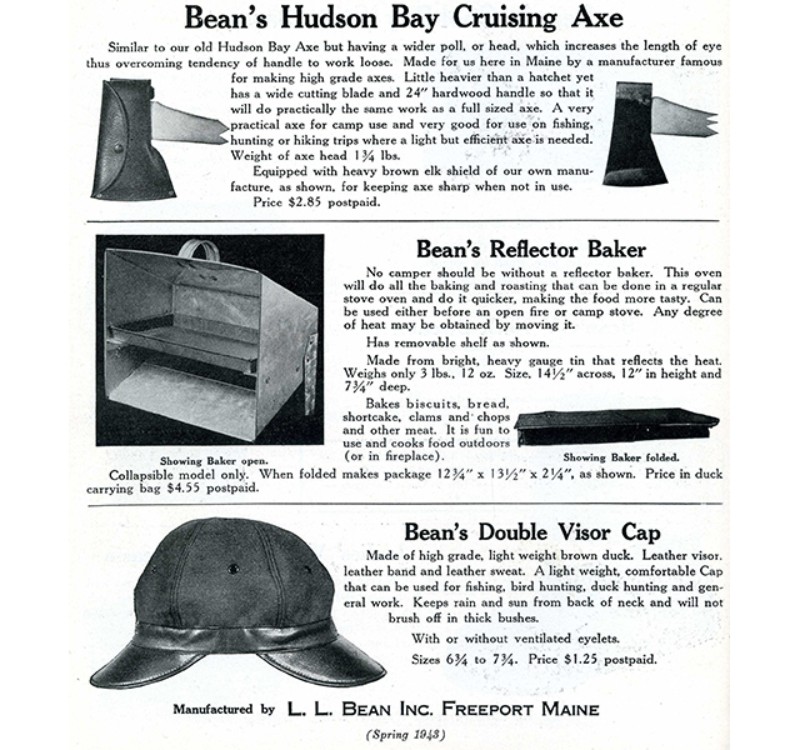Freeport, ME, May 27, 2021
From the Archives: Leon Leonwood Bean’s 1942 Camping Essentials
Leon leaving for a product-testing trip, 1969.
Camping as an American pastime took hold in the early 20th century, with campgrounds cropping up from New England to Oregon. In the 1920s, with the advent of affordable automobiles and paid time off, Americans found themselves with the time and means to venture out of cities and into the wilderness. Inexpensive and freeing, auto camping was all the rage, despite a lack of tourism infrastructure. Less experienced vacationers took to tent camping to retreat to nature, and as a result, L.L.Bean founder Leon Leonwood Bean fine-tuned his catalog to introduce essentials for novice campers.
L. L. had countless tips for campers of all experience levels and devoted several chapters to the topic in his 1942 book, Hunting, Fishing and Camping, ranging from “How To Choose a Tent” to “Camp Cooking Recipes.” Gear was key to ensuring an enjoyable and relaxing experience, and a few of his favorite camping essentials have endured for decades on the pages of our L.L.Bean catalog.
“The success and pleasure of your outing depends largely on your equipment. You can easily spoil a wonderful trip by too much, or too little or not enough of the right kind of an outfit.” – Leon Leonwood Bean, from a 1927 “Notice Tip”
Pages from Leon Leonwood Bean’s 1942 book, Hunting, Fishing and Camping, offering how-to tips and gear recommendations for outdoorsmen and women of all skill levels.
Here, we’ve compiled several of L. L.’s top-recommended camping gear, all of which have been perfected over decades and are still available in L.L.Bean catalogs, stores and online.
Bean’s Sleeping Bag, circa 1928-1941
Capitalizing on the car camping craze, camping accessories were offered for the first time by L.L.Bean in 1928. Gear deemed necessary by L. L. included the Pine Tree “Poleless” Tent, an air mattress, cots, cookware, and a two-burner stove. The Bean Sleeping Bag, Camp Moccasins, chrome plated flashlight, playing cards, thermos, and wood firkins also rounded out the list. Our modern version, the Camp Sleeping Bag hasn’t changed much since its original iteration in 1928, although it is significantly lighter and warmer these days. Originally weighing in at 12 lbs. thanks to an 8 lb. wool blanket – the original weighted blanket? – today’s versions lend themselves to more adventures. Insulating materials like polyester and nylon deliver warmth without added bulk, and a flannel-lined option over-delivers on cozy, just like the original.
Bean's Sleeping Bag catalog feature, circa 1928
Bean's Sleeping Bag catalog feature, circa 1929
Trout Knife, circa 1934
L. L. described the Trout Knife as “great for cleaning game fish and very handy for general camp and home use.” Appearing in the L.L.Bean catalog for the first time in spring 1934, the original style featured a 4.5-inch blade with three brass rivets. We’ve improved the original design with a subtle new finger groove in the classic rosewood handle and a stainless-steel blade that maintains an edge.
L.L.Bean Trout Knife catalog feature, circa 1934
Modern L.L.Bean Trout Knife
Hudson Bay Axe, circa 1934
Originally sold by L.L.Bean in 1934, the Hudson Bay Axe was first used as a trading piece along the fur trade routes. The original version featured a 29-inch handle, which was shortened the following year to 24-inches – the same length we offer today. It’s a great utility axe from cabins to campsites that has stood the test of time. The Hudson Bay Axe is available at select retail stores.
Hudson Bay Axe catalog feature, circa 1934
Hudson Bay Axe catalog feature, circa 1943
Next month is National Camping Month and we hope you enjoy it with these tools and our Camping Guides.

